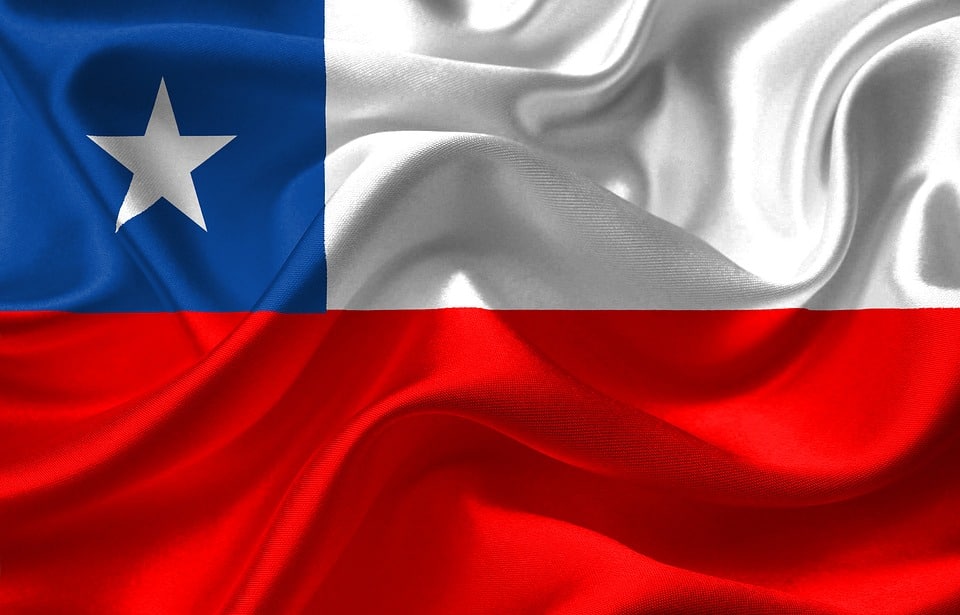In this article, we will discuss the significance of the flag of Chile, including its origins, meaning, and symbols. A great number of Chilean patriots, who were fighting for independence from Spain at the beginning of the 19th century, wore cockades with the colors blue, white, and yellow on them. On September 30, 1812, the republic began flying a tricolor flag based on the cockades. However, it is still unclear what the meaning of these colors is. This occurred after Chile formally declared its independence from Spain.
The national flag of Chile, which is often referred to as the “Flag of Transition,” was formally approved three years later. This occurred during revolutionary skirmishes between the revolutionary forces led by José de San Martin and the army of the royalists. It passed muster by having vertical stripes of red, white, and blue that were the same width as each other. On October 18, 1817, the new nation made its first official commitment to using the flag that is currently in use.
History of the Chilean Flag

The flag of Chile was formally adopted on October 18, 1817.
©iStock.com/Leonardo Silveira
During the process of colonization by Spanish forces, a large number of Spanish flags were employed. Each battalion had its own flag, which displayed the royal coat of arms of the King of Spain. Between the years 1812 and 1818, Chile used two distinct flags to represent itself. The first one was called “Old Fatherland,” and the second one was called the flag of Transition.
During the Arauco War, the Mapuche flew a banner with these colors. The author of the epic poem La Araucana credits that banner as the inspiration for the poem’s design. On “Flag Day,” which is celebrated every year on July 9, people remember the 77 soldiers who lost their lives during the Battle of La Concepción in 1882.
The national flag of Chile, known as La Estrella Solitaria (which literally translates to “the Lone Star”), was designed in 1817. It was designed during the country’s struggle for independence from Spain. It was utilized in 1818 during the administration of the Oath of Independence. On October 18, 1817, the flag was officially ratified. The stripes of the flag are red, white, and blue horizontally. There is also a white star positioned in the upper left corner of the flag.
Design of the Flag of Chile
A white five-pointed star is put in the center of a blue square that is the same height as the white area. It is placed in the canton of the flag of Chile. The flag of Chile is divided horizontally into two sections of equal size: one white and one red.
It has a length-to-width ratio of 3 to 2. It is horizontally partitioned into two bands of the same height all the way across (the lower being red). The upper section is broken up into two equal portions. There is a blue square that has a white star in the middle of it and a white rectangle on the other side. There is a relationship between it and the Stars and Stripes in some capacity.
Similarities to the Texas Flag

Texas State flag – This flag is almost identical to the flag of Chile.
©iStock.com/leekris
Uncanny resemblances can be drawn between the flag of Texas and the flag of Chile. In reality, the only noticeable difference between the two flags is the placement of a single white star on each. Texas’s flag’s blue field is rectangular, while Chile’s is square, and both feature a star in the center.
What’s more, the flags of Texas and Chile aren’t even remotely related to each other. This further adds to the complexity of the situation. The “Lone Star” is a well-known English term for the Texas flag. Its Spanish equivalent, the “Sol Sol,” has been used to describe the flag of Chile. Both originated following their respective countries’ declarations of independence from Mexico and Spain.
Texas’s flag wasn’t approved until 25 January 1839, but Chile’s current design was adopted 22 years earlier, on 18 October 1817.
The Symbolism of the Chilean Flag
The star represents Venus, which is significant to the indigenous Mapuche people of the country and symbolizes a guide to progress and honor. However, other interpretations say it refers to an independent state; the color blue represents the sky and the Pacific Ocean; the color white represents the snow-covered Andes; and the color red represents the blood that was spilled to achieve independence.
It has been noticed by historians that the Araucanian Indians of Chile presented their soldiers with sashes that contained all three colors in the 15th century. Nevertheless, they have been unable to establish a clear relationship between the two cultures.
Thank you for reading! Have some feedback for us? Contact the AZ Animals editorial team.








